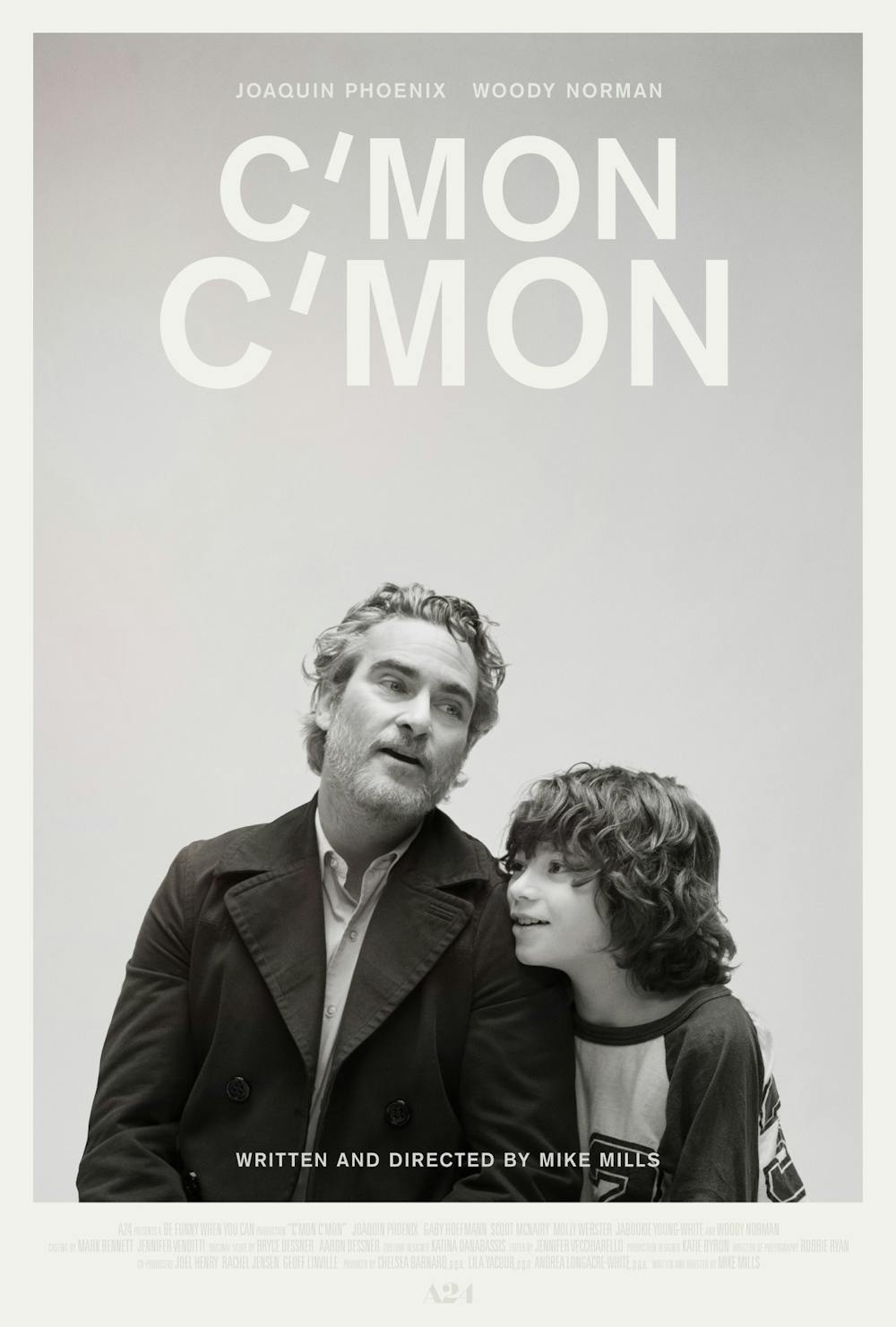This review contains spoilers
The black and white kaleidoscope that is “C’mon C’mon” is an exploration of the space between people and the malleability of relationships. Such subject matter might easily have been lost in the transition from brain to screen, but the phenomenal cast, thoughtful direction and wonderful cinematography brought this world to life perfectly.
In the film, Joaquin Phoenix’s Johnny and Woody Norman’s Jesse, who are uncle and nephew, are forcibly but sweetly brought together when Jesse’s mother, Viv, painstakingly leaves to care for her mentally unstable father Paul, who wants to receive help but has struggled to. In dealing with Paul’s psychosis and rekindling a relationship with Johnny, Viv is reminded of trauma surrounding the death of her mother. Meanwhile, Jesse and Johnny navigate their changed lives with her consistently present on the other end of the phone, somehow providing for the entirety of her family without exchanging a glance.
Interlaced with the fictional work life of Johnny, an interviewer, are legitimate interviews held by the actors with real-world children from cities across the U.S. Unscripted and unadulterated, these clips fall naturally throughout the film and support the childish air of hopefulness, leaving the viewer in a state of bliss. Mills’ directorial choice to incorporate reality into the film did nothing but bolster its fully dimensional purity.
Phoenix’s ability to portray childlike spontaneity through his adult character worked beautifully with and seemed to benefit from the work of Norman at times. The two had an unnervingly intense chemistry and to watch their relationship unfold from beneath the big screen sometimes felt like an invasion of the characters’ privacy.
Cinematographer Robbie Ryan (“Marriage Story,” “The Favorite”) shot the film in black and white to foster nostalgia, with images reminiscent of memories in their faded glory. Shots of Jesse and Johnny chatting before bed or in the low light of early morning brought a reality to the film that you could almost taste. There was a purity of childhood captured in these innocent glimpses of Jesse reaching for arms to be held by.
A complicated plot intertwined with equally complex subplots must not have been easy to design, but the intermixing of actual interviews with children throughout the places Johnny explored made it difficult not to get lost in their full-of-life world.
These interviews, plentiful and raw, allowed for the film to be rooted in an honesty generally only found in documentaries. The unscripted side of the film fed beautifully into the well-done presentation of Jesse and Johnny’s wildly fluctuant emotional growing pains.
“C’mon C’mon” transcends its every label, not quite a drama or an otherwise family-centered piece, and is surely nothing any of the cast, crew or audience were familiar with before. This film serves to capture both the loss of and return to childhood, and does so successfully. The perspectives expressed on the screen are beautifully captured and further cultivated between all of us living off the screen in our varied but consistently distant states of reality.
Natalie Jude is a beat reporter at the Daily Lobo. She can be contacted at culture@dailylobo.com or on Twitter @natalaroni
Get content from The Daily Lobo delivered to your inbox






